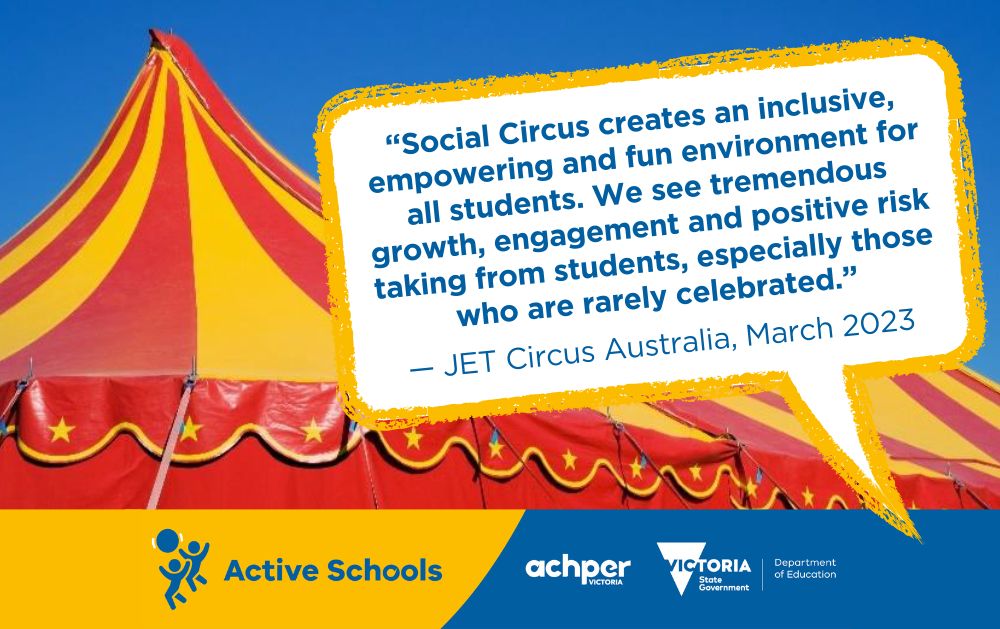
Consulting year in review: Celebrating a big year of impact and innovation
As we wrap up another huge year at Active Education Australia, we want to take a moment to recognise the incredible work achieved across our consulting projects.
 Read on as we share an excerpt from Active Schools case study, ‘Active Schools Building Block #15 – The foundation of your Active Schools journey’:
Read on as we share an excerpt from Active Schools case study, ‘Active Schools Building Block #15 – The foundation of your Active Schools journey’:
Who would have thought that the simple toss of a few colourful balls in the air could inspire movement? Or a simple tuck and tumble could lead to a shift in active participation rates?
What if you could build a culture where a willingness to fail, over and over again in order to master a small intricate skill became the norm? What would be the resulting effect on a student’s resilience and self-esteem?
Creating a non-competitive, supportive, social atmosphere which involves physical activity within the school yard can be a challenge.
Circus arts can provide such an environment, promoting exploration and playful expression in direct contrast to competitive traditional sport. A non-competitive, safe, nurturing environment which may appeal to students who would otherwise shy away from traditional competitive team sports.
Research has shown that the gap in motor competence between the genders, when exposed to a circus arts program, is smaller than in traditional physical education classes.
Along with the obvious physical benefits of improved hand eye coordination, ambidexterity, balance, strength, endurance, flexibility, reflexes and reactions, participation in Circus arts also provides opportunities for students to develop their personal and social skills, improve their mental and emotional health, patience and persistence, resilience and focus.
Circus arts allows students who have previously been disengaged with traditional sport to develop their physical literacy. It builds competence and confidence of how to be physically active for life, in a fun and engaging manner.
When taught with a student-centred approach (sharing of power), circus art allows students to formulate new ideas, make decisions and explore new and different ways to move. It encourages them to take considered risks and embrace the concept of ‘not knowing the outcome.’
It gives them permission to use their initiative and creativity. ‘Education is not about filling a bucket but about lighting a fire’ – Gert Biestas (2014). Circus arts promotes this philosophy, while maintaining explicit circus element intentions, by demonstrating examples of movement and encouraging students to explore ways of moving and using equipment, both individually and collaboratively.
It is recommended that schools consider their current approaches towards physical activity, identify any gaps or opportunities, and take action to ensure a range of active recreation pursuits are accessible and meet the needs of all students.
To support the inclusion of Circus art in your active recreation offerings, consider the following questions:
To learn more about approaches and strategies, please click here to download ‘Active Schools Building Block #15 – The foundation of your Active Schools journey’ >>

As we wrap up another huge year at Active Education Australia, we want to take a moment to recognise the incredible work achieved across our consulting projects.

Thank you to our community for being such an important part of this year’s conference! Across two energising days, the whole venue was buzzing with positive vibes, meaningful chats and powerful professional learning. Read the full wrap up!